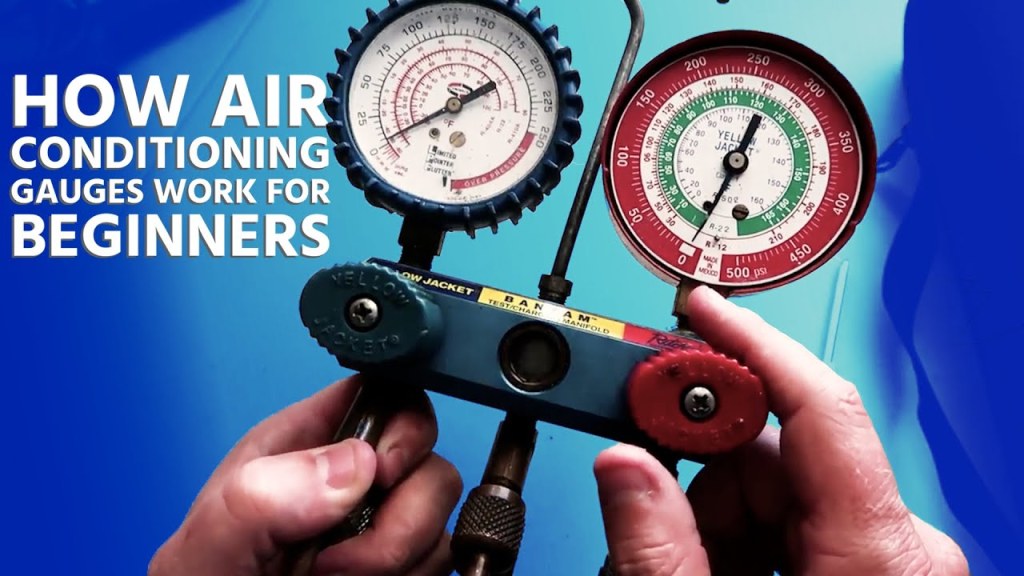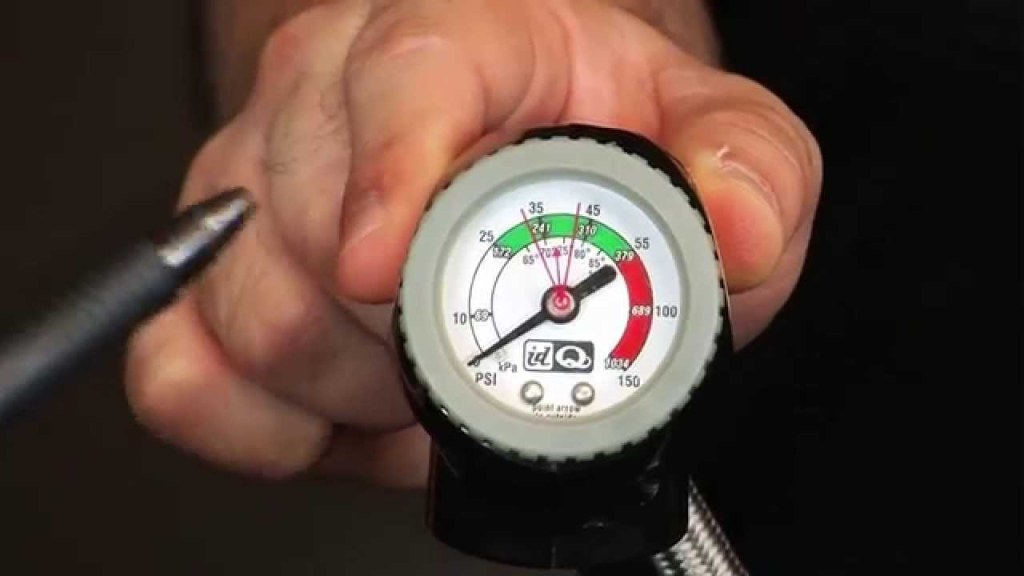Mastering The Art Of Using AC Gauges On A Car: Your Ultimate Guide To Efficient Cooling
How to Use AC Gauges on a Car
Introduction
Hello, Car Enthusiast! Are you looking to learn how to use AC gauges on a car? Whether you’re a seasoned mechanic or a curious car lover, understanding how to use AC gauges is essential for properly maintaining your vehicle’s air conditioning system. In this article, we will guide you through the step-by-step process of using AC gauges on a car, ensuring that you have a clear understanding of the procedure. So, let’s get started!
3 Picture Gallery: Mastering The Art Of Using AC Gauges On A Car: Your Ultimate Guide To Efficient Cooling



What Are AC Gauges?
🔎 Before we dive into the details of how to use AC gauges on a car, let’s first understand what AC gauges are. AC gauges, also known as manifold gauges, are a set of tools that allow you to measure the pressure and temperature of the refrigerant in your car’s air conditioning system. They consist of two gauges, namely the high-pressure gauge and the low-pressure gauge, along with various hoses and connectors.
High-Pressure Gauge

Image Source: ytimg.com
🔍 The high-pressure gauge is designed to measure the pressure of the refrigerant on the high-pressure side of the AC system. It typically has a range of 0 to 500 psi and is color-coded in red for easy identification.
Low-Pressure Gauge
🔍 On the other hand, the low-pressure gauge measures the pressure of the refrigerant on the low-pressure side of the AC system. It usually has a range of 0 to 100 psi and is color-coded in blue.
Hoses and Connectors

Image Source: ytimg.com
🔍 To connect the AC gauges to your car’s AC system, you’ll need a set of hoses and connectors. These hoses are equipped with valves that allow you to control the flow of refrigerant and establish a connection between the gauges and the AC system.
Who Should Use AC Gauges?
🔎 AC gauges are primarily used by automotive technicians and DIY enthusiasts who have a basic understanding of car mechanics. If you are knowledgeable about automotive systems and have experience working with AC systems, using AC gauges can help you diagnose and troubleshoot issues with your car’s air conditioning. However, if you are unsure or lack the necessary knowledge, it is recommended to consult a professional mechanic.
When to Use AC Gauges?

Image Source: ytimg.com
🔎 You should consider using AC gauges on your car’s air conditioning system in various situations, such as:
1. AC System Diagnosis
🔑 When your car’s AC system is not functioning properly, using AC gauges can help you diagnose the issue by measuring the pressure and temperature of the refrigerant. This information can give you insights into the health of the AC system and identify any potential problems.
2. AC System Maintenance
🔑 Regular maintenance is crucial for keeping your car’s AC system in optimal condition. By using AC gauges, you can check the pressure and temperature readings, ensuring that the system is operating within the recommended range. If any abnormalities are detected, you can take appropriate actions to rectify the issue.
3. AC System Repair
🔑 When repairing or replacing components of your car’s AC system, using AC gauges is essential to determine if the system has been properly recharged and is functioning correctly. By measuring the pressure, you can ensure that the correct amount of refrigerant is present, preventing potential damage to the system.
Where to Use AC Gauges?
🔎 AC gauges should be used directly on your car’s air conditioning system. The specific location may vary depending on the make and model of your vehicle, but generally, you will find the AC service ports under the hood. These ports are typically labeled with the letters H for high pressure and L for low pressure.
Why Use AC Gauges?
🔎 Using AC gauges offers several benefits when working on your car’s air conditioning system:
1. Accurate Diagnosis
✅ By measuring the pressure and temperature of the refrigerant, AC gauges provide accurate readings that can help you diagnose issues with your car’s AC system. This allows for targeted repairs and prevents unnecessary replacements.
2. Prevent Costly Repairs
✅ Regularly using AC gauges for maintenance and troubleshooting can help identify potential problems early on. By addressing these issues promptly, you can prevent more significant damage and costly repairs down the line.
3. Ensure Optimal Performance
✅ Properly using AC gauges ensures that your car’s AC system is operating within the recommended range. This not only improves the overall performance of the system but also enhances your driving experience by providing efficient cooling.
4. Save Time and Money
✅ By accurately diagnosing issues and performing necessary repairs with the help of AC gauges, you can save both time and money. You can avoid unnecessary part replacements and ensure that the repairs are done right the first time.
5. Gain Technical Knowledge
✅ Using AC gauges allows you to gain a deeper understanding of your car’s air conditioning system. You can learn how the different components work together and develop valuable technical knowledge that can be useful in other automotive endeavors.
How to Use AC Gauges on a Car?
🔎 Now that we’ve covered the basics, let’s dive into the step-by-step process of using AC gauges on a car:
Step 1: Prepare the Necessary Tools
🔧 Before using AC gauges, gather all the necessary tools, including the gauges, hoses, connectors, and safety equipment such as gloves and goggles. Ensure that the gauges are properly calibrated and in good working condition.
Step 2: Locate the AC Service Ports
🔧 Open the hood of your car and locate the AC service ports. These ports are typically located on the metal lines near the firewall. The high-pressure port is usually larger and positioned on the line that leads to the condenser, while the low-pressure port is smaller and connected to the line that goes to the compressor.
Step 3: Connect the Gauges
🔧 Attach the hoses to the corresponding ports on the AC gauges. The high-pressure hose should be connected to the high-pressure port, and the low-pressure hose to the low-pressure port. Make sure the connections are secure.
Step 4: Start the Car and Turn on the AC
🔧 Start your car’s engine and turn on the AC system. Set the controls to the maximum cool setting and the highest fan speed. Allow the system to run for a few minutes to stabilize.
Step 5: Read the Gauges
🔧 Observe the readings on the high-pressure and low-pressure gauges. The ideal readings may vary depending on the manufacturer specifications and ambient temperature. Refer to your car’s manual or AC system specifications for the recommended range.
Step 6: Interpret the Readings
🔧 Compare the readings on the gauges to the recommended range. If the pressure readings are too high or too low, it indicates a potential issue with the AC system. Consult a professional mechanic for further diagnosis and repairs.
Step 7: Disconnect the Gauges
🔧 Once you have finished using the AC gauges, carefully disconnect the hoses from the service ports. If there is any refrigerant left in the hoses, release it into a recovery tank or follow proper disposal guidelines.
FAQs (Frequently Asked Questions)
1. Can I use AC gauges on any car?
Yes, AC gauges can be used on most cars as long as you locate the correct AC service ports. However, it is recommended to consult your car’s manual or a professional mechanic for specific instructions.
2. How often should I use AC gauges on my car?
It is advisable to use AC gauges during regular maintenance or when you suspect an issue with your car’s AC system. Additionally, using AC gauges before and after any AC system repairs or component replacements can ensure the system is functioning correctly.
3. Can I recharge my car’s AC system using AC gauges?
Yes, AC gauges can be used to recharge your car’s AC system. However, it requires proper knowledge and understanding of the correct refrigerant levels. It is recommended to consult a professional mechanic for AC system recharging.
4. Are AC gauges dangerous to use?
When used correctly and with proper safety measures, AC gauges are not dangerous. However, working with refrigerants can be hazardous, and it is essential to follow safety guidelines, wear protective gear, and handle the gauges with caution.
5. Can I use AC gauges without any technical knowledge?
While it is possible to use AC gauges without technical knowledge, it is recommended to have a basic understanding of automotive systems and AC systems. This knowledge will help you interpret the gauge readings and make informed decisions regarding your car’s AC system.
Conclusion
✍️ Using AC gauges on a car is an essential skill for anyone who wants to properly maintain and troubleshoot their vehicle’s air conditioning system. By following the step-by-step process outlined in this article, you can use AC gauges with confidence and gain valuable insights into the health of your car’s AC system. Remember to prioritize safety and consult a professional mechanic if you encounter any issues beyond your expertise. Enjoy the cool comfort of a well-functioning air conditioner in your car!
Final Remarks
🔒 This article serves as a guide for using AC gauges on a car and should not be considered as a substitute for professional advice. Working with AC systems and refrigerants can be dangerous, and it is always recommended to consult a qualified mechanic for any repairs or maintenance. Follow all safety guidelines, wear appropriate protective gear, and proceed with caution. The information provided in this article is accurate to the best of our knowledge at the time of writing, but due to the ever-evolving nature of automotive technology, it is essential to stay updated and refer to the manufacturer’s instructions and specifications for your specific vehicle.
This post topic: Used Car



